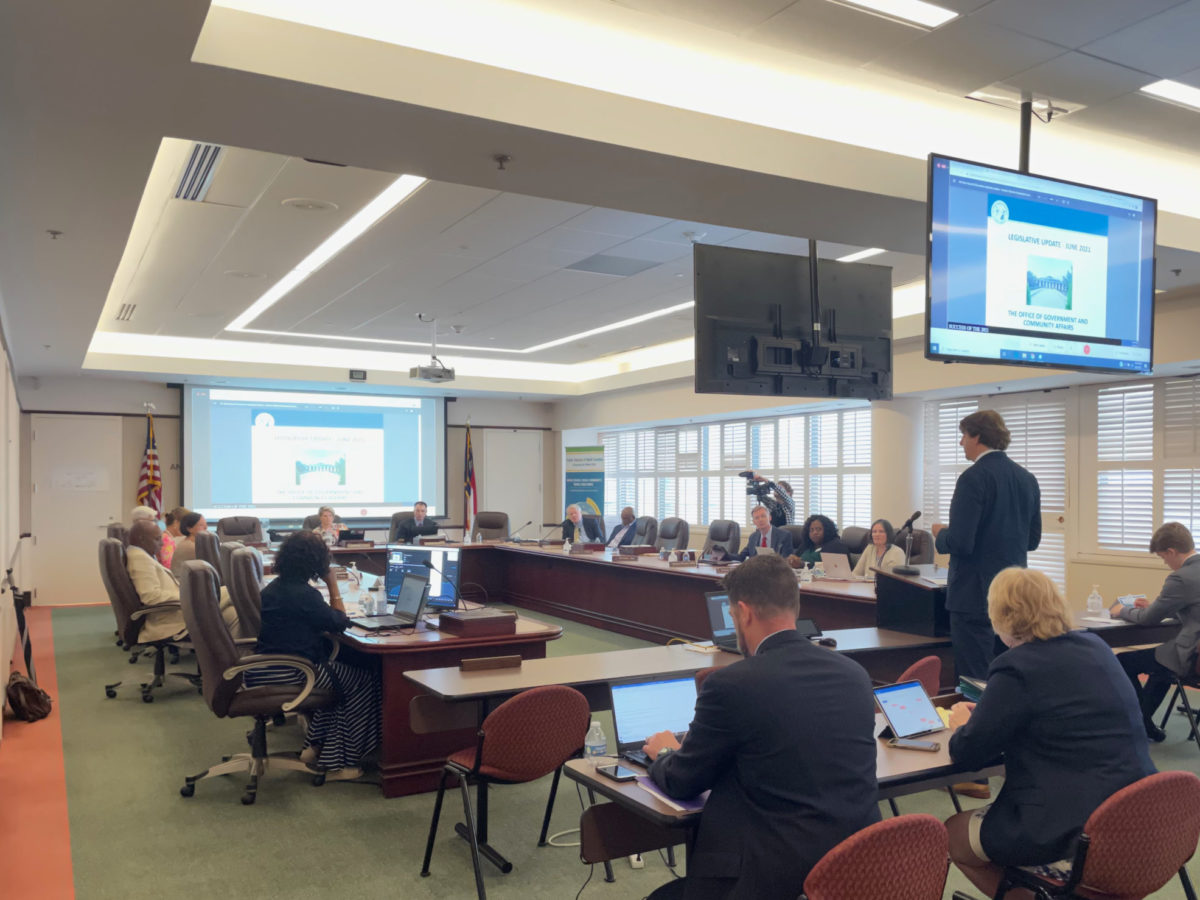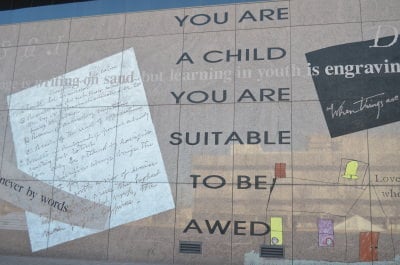
|
|
There was strong disagreement between State Board of Education members over the adoption of new social studies standards back in January and February. But when it came time to discuss supporting materials for those new standards this week, Board discussion was more muted.
That may be, in part, because there are no take-backs when it comes to these standards. Board member Jill Camnitz, a chair of the committee that helped develop the standards, reminded Board members Wednesday that their vote shouldn’t be about whether or not they approved the standards back in February. Instead, she said, their vote should be on whether the supporting documents align with the standards.
The vote by the Board on Thursday was supposed to cover what are referred to as the “K-5 unpacking documents” as well as the “K-12 crosswalks” and “K-12 strand maps.” You can see examples in the presentation above. The “K-12 glossary” and “6-12 unpacking documents” (which have not yet been presented to the Board) would have been voted on next month.
However, the vote was ultimately delayed until no later than June 18, so that everything (except the “6-12 unpacking documents”) could be considered together.
Camnitz said Wednesday that all these materials are not meant to represent a curriculum and are not requirements. Curriculum is decided by local districts, not the state. She said the only requirement was that the standards be covered. During a presentation back in January, state Department of Public Instruction (DPI) staff described academic standards as “what we want students to know and be able to do.” Curriculum, on the other hand, was described as the system that makes sure students learn the standards.
Board member Amy White, who voted against the standards adoption in February, brought up the extensive discussion and dissent on the standards at previous meetings. She asked State Superintendent of Public Instruction Catherine Truitt to explain her role in working on the supporting materials that are under consideration.
Truitt, who does not have a vote on the Board, said she was one of many people who had input, and that one of her main revisions was to make the supporting materials more general.
“I found that the early drafts of this unpacking document contained much more specificity than in the past or as compared to other subject unpacking documents,” she said.
She went on to say that the earlier drafts of the supporting materials did not contain what she saw as enough diverse example topics, saying that the examples often favored one “community” over another.
Board Member James Ford, a strong proponent of the new standards, asked her to elaborate on what specifically she had thought needed to be changed.
After consulting her notes, Truitt referred to instances where she said examples in the supporting materials that pertained to African Americans vastly outnumbered those pertaining to other groups, including Jewish, Asian, American Indian, and LGBTQ people.
“That’s the disproportionality I’m referring to,” she said.
DPI staff said that Truitt’s issues have been addressed and the materials revised during the meeting Wednesday.
White also suggested during the meeting Wednesday that there should be something accompanying the supporting materials that makes clear that the United States is a great country. She said she wants teachers to help students understand history in all its complexity, but that’s not enough.
“It’s important that we undergird that with the idea that we live in a tremendously prosperous land,” she said.
Board Chair Eric Davis suggested that the preamble to the standards, approved in February, does some of that and asked Camnitz to consider perhaps adding something like what White wants for consideration.
On Thursday, Ford pushed back against White’s suggestion.
“I just wanted to offer a counter recommendation that we not do that,” he said, adding: “That is categorically an evaluative statement. If one concludes that our nation is really good but not great or above average, it does not make room for those considerations.”
Later in the meeting, the Board discussed new Academically or Intellectually Gifted (AIG) standards for the state’s schools. Among other things, these standards support a more equitable approach to identifying students as academically or intellectually gifted. Read more about that in the article by EducationNC reporter Rupen Fofaria below.
In that article, he reports the following statistics, courtesy of DPI:
- Percent of public school student population that is white: 47.
- Percent of students identified as academically gifted who are white: 70.
- Percent of public school student population that is Black: 24.
- Percent of students identified as academically gifted who are Black: 10.
- Percent of public school student population that is Hispanic: 19.
- Percent of students identified as academically gifted who are Hispanic: 9.
White mentioned during the meeting inaccurate emails that Board members had been getting suggesting that the revisions amounted to the elimination of the academically gifted program. She gave DPI staff the opportunity to debunk the claim.
Later, Truitt expressed her definition of equity, “Giving every single student what they need at the time that they need it.” She said that applies just as much to academically gifted students as it does to everybody else.





